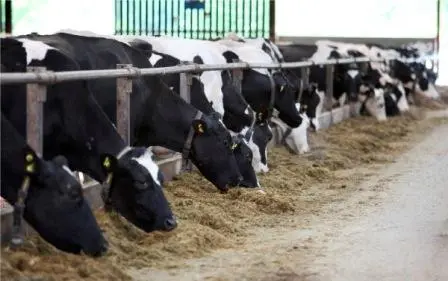Biomin South Africa COO Albert van Rensburg pointed out that the contamination of animal feed with mycotoxins is a threat to farmers internationally
Van Rensburg noted that dairy cows have some capacity to protect themselves against the harmful effects of mycotoxins, due to the detoxifying action of certain rumenal micro-organisms.
He did, however, highlight the fact that modern dairy cows have a much faster passage of feed through the rumen, which ultimately results in less time for rumen microbes to detoxify mycotoxins.
“The combined factors of high production, incompetent rumen microflora action, unbalanced nutrition and mycotoxins in the feed, are key factors that enable mycotoxins to escape detoxification and be absorbed by the intestine, as in monogastrics,” he said.
Dairy farmer Louis Lemmer, who is based in Lichtenburg in the North West province, has been making use of a mycotoxin deactivator since July 2012, and has noticed measurable improvements in milk production in his herds. “Commonly these types of feed additives are known as “binders” and, I have already noticed a steady increase in milk production of between 2.5 and 3.5 per cow, per day since switching to a product that offers three different mycotoxin risk management strategies; biotransformation bio-protection and adsorption (binding).
“At this point in time, it is too early to determine whether the mycotoxin deactivator has improved the wellness of the livestock. However, judging by the improvement in milk production, I am confident that it will have a positive effect in the long-term. One of the most important aspects of farming is seeing a good return on investment, due to the fact that profit margins are so low,” he continued.
Symptoms of mycotoxicosis
Symptoms of mycotoxicosis in a dairy herd may be non-specific, wide ranging and sub-clinical, depending on the types of mycotoxins and their interaction with other stress factors, such as farm management, presence of infectious diseases and the welfare of the animals. Van Rensburg added that it is difficult to recognise when mycotoxins are causing poor health and performance in herds.
“Mycotoxins such as zearalenone predominantly affect reproduction and are relatively easy to identify. Unfortunately, the most common and most difficult challenges for identification occur when rations contain low levels of mycotoxins, and when the health effects are subclinical.”
Mycotoxins can be the primary agent causing acute health or production problems in a dairy herd, but are more likely to be a factor contributing to chronic problems, including; a higher incidence of diseases, poor reproductive performance and suboptimal milk production. Van Rensburg explained that mycotoxins exert their effects through four primary mechanisms, namely; intake reduction or feed refusal, reduced nutrient absorption and impaired metabolism, alterations in the endocrine and exocrine systems and suppression of the immune system.
“It is a well known fact that almost all mycotoxins suppress the immune system and impair a proper rumen function, even at levels that may not cause metabolic or physiological problems. Accurate feeding of dairy cows in combination with continuous mycotoxin risk management is therefore key in managing the optimal performance of livestock,” he concluded.
Taken from African Farming and Food Processing March/April 2013








